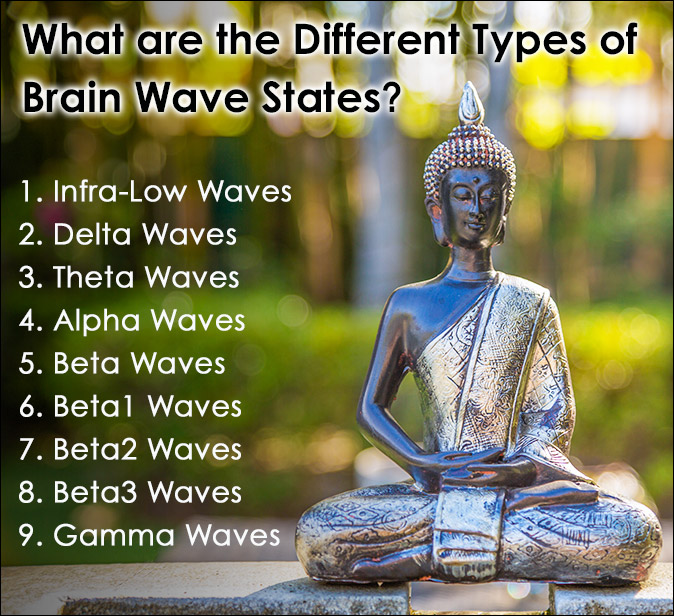
Thanks to the Dalai Lama, the the powerful healing effects behind the science of meditation has been demystified. Meditation has long been known to relax the central nervous system, offering a potent stress reduction method.
However, the tangible evidence-backed science has only become popularized in the past century – allowing skeptics and naysayers to jump on board and reap the healing benefits of meditation.
We’ve all been trained to look for the scientific “proof” and it seems that science is now catching up with the ancient yogis.
“Neuroplasticity was discovered while trying to prove that the brain was compartmentalized, specialized and fixed.”
Neuroscience and Meditation
Back in the 1970s, a group of neuroscientists set out to prove that the brain was compartmentalized, specialized and fixed, only to find out that the complete opposite was true. In fact, our brains have the capability to continually change, and this is called neuroplasticity.
Despite the discovery of neuroplasticity, people still get stuck in the old way of thinking – that as we age we cannot alter our brain’s ability to function. The truth is – our brains change continually, in response to our experiences throughout life.
Brain programming begins in the womb. A developing fetus can hear, feel and absorb all that is going on around them even when inside their mother. It’s during this time that the baby gets acclimated to the world that they are going to enter.
This is the super learning phase, from conception until age seven we are predominantly in the alpha and theta brainwave state. These are the states people are in during meditation and hypnosis.
Long-term meditators activate all of the areas of their brain creating ultimate connectivity and reaching the gamma brain wave state.

What are the Different Types of Brain Wave States?
Our brains are electrical powerhouses, continually firing and wiring in relation to what is going on around about us. Our thoughts, emotions, desires, perceptions and behaviors are all managed by the electrical pulses of the brain.
Our brain is made up of an intricate network of neurons and receptors that fire in relation to various internal and external stimuli.
Here are 9 Types of Currently Known Brain Waves:
1. Infra-Low Brain Waves (<0.5Hz) – Tonic slow cortical potentials used as a reset mechanism in the neurofeedback protocols.
2. Delta Waves (0.5 to 3Hz) – Slow and loud rhythmical brainwaves resulting from deep meditation or dreamless sleep. This type of brainwave is required for healing and regeneration.
3. Theta Waves (3 to 8 Hz) – The frequency most beneficial for memory, intuition and learning that normally occurs during sleep. This state is felt before going to sleep or waking in the morning.
4. Alpha Waves (8 to 12 Hz) – Alpha is the resting state of calm, mental clarity and this is the frequency felt during mindfulness and reflective thoughts.
5. Beta Waves (12 to 38 Hz) – People often speak of beta as one type of wave; however the term beta covers a spectrum of waves. Beta is our normal waking state and can be split up into three areas – Beta1, Beta2 and Beta3 as follows:
6. Beta1 Waves (12 to 15Hz) – These are present when the brain is idle or musing.
7. Beta2 Waves (15 to 22Hz) – This state represents the brain mode of figuring things out, or during calculation and logical thought.
8. Beta3 Waves (22 to 38Hz) – These appear during highly complex thought and when the brain uses a lot of mental energy. New experiences or excitement occur in this frequency and being in this state for too long can harm the brain and produce nervousness and anxiety.
9. Gamma Waves (38 to 100 Hz) – To fully experience this state, the mind has to be empty or very quiet. This is the state above neuronal firing, oneness consciousness or universal love. This state is found in Olympic level meditators that have meditated for tens of thousands of hours.

What Are Gamma Brain Waves?
Gamma brain waves are the highest (and fastest) neural oscillations with a frequency range of 25 to 100 Hz. Before 1924, when Hans Berger invented the EEG (electroencephalography) machine, these high gamma frequencies could not be measured.
In fact, the highest brain wave that could be measured with old analogue machines was 25Hz.
Since 1924, neuroscientists have made massive leaps forward in the ability to accurately measure gamma waves.
Advancements in EEG technology has allowed for the measurement of high frequency emotions like empathy, compassion and love to be charted, which is a momentous step forward in our understanding of emotions and their effects on the human condition.
The Science of Meditation Shows It Increases the Brain’s Grey Matter
Yogi’s and Meditators have attributed the feeling of bliss and love to meditation for centuries.
However, it wasn’t until The Dalai Lama encouraged scientific investigation to be carried out by Waisman Laboratory for Brain Imaging and Behavior at the University of Wisconsin in Madison that we really began to accept the science of meditation in the west.
Further studies led by Sara Lazar, from Harvard University, in 2000 confirmed that meditation increases the brain’s grey matter – clearly illustrating that we can grow our brains with meditation. Listening to gamma binaural beats has also been shown to positively affect memory.

Interestingly, gamma brain waves are thought to unify the brain by a process known as neural synchrony, creating heightened cognitive abilities.
The good news is that you can train your brain to go into gamma with long-term meditation practice.
During this heightened state of consciousness the synchronized brain activity travels from the back of the brain in a region known as the thalamus, to the front of the brain 40 times per second. This enhances mental processing and memory.
If you train your mind to go into gamma states during meditation, then you can access this frequency in everyday life. In this unified state of consciousness it’s possible to access the whole spectrum of brainwaves.
Being able to access all states of consciousness by enhanced connectivity with neurons made up of light and electricity is the true meaning of enlightenment, also known as the awakened mind.
The Science of Meditation for Healing and Recovery
Fortunately, the truth about the science of meditation is reaching the west with evidence to back it up.
We often find ourselves compartmentalized inside our own mind, and meditation is a process by which we can literally free our mind from everyday repetitive thoughts.
At Alo House Recovery Centers, we use meditation as part of our mental health and addiction treatment modalities, and our clients have seen how powerful it can be for calming the mind, increasing focus and attention, and breaking free from negative repetitive thoughts.
It is an excellent tool for healing and recovery and with a little formal guidance in the beginning can be practiced and developed over a lifetime.
Related Posts
- Is Hangxiety (Hangover Anxiety) From Alcohol a Real Thing?
Have you ever experienced a bout of hangover anxiety after a night of drinking alcohol?…
- Addiction and Depression - Similar Disorders But Fundamentally Different
Addiction and depression, it's much like the age-old question of the chicken and the egg.…
- 46 Movies About Drugs, Addiction and Alcoholism
Movies about drugs, addiction and alcoholism can be hard-hitting and even triggering for some people.…
